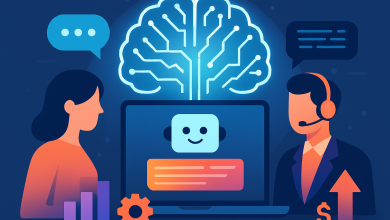
As the old axiom in the data world goes, “garbage in, garbage out.”
We are seeing the truth of this play out in the M&A market, where legacy companies are prioritizing data infrastructure platforms to survive and thrive in this new era. The AI race, at its core, is about the essential, continuous work of collecting and connecting large amounts of high-quality data for models to train on.
Infrastructure for Quality and Rapid Innovation into Existing Systems
While public discourse on AI often centers on model updates and agents, the real leverage for an established enterprise operating at scale like Tala is a tech stack built for speed of innovation and flexible integrations. This allows for rapid experimentation with new AI models and data and, crucially, the ability to quickly integrate successful results into a live, customer-facing environment.
At Tala, our AI architecture is designed for this kind of plug-and-play integration. We combine our proprietary data spanning a decade of customer behavior across multiple continents with external LLMs and outputs. We also continue to invest in the infrastructure and processes that ensure data quality – especially as data sources and types become more diverse and unstructured in this AI era. Clean data is still key no matter what models are used.
Build in efficiencies to achieve ROI
Companies also need to think about ROI. If infrastructure does not build in efficiencies, even the most groundbreaking AI advances may not be ROI positive if data costs explode. Further, infrastructure must allow companies to experiment across multiple foundation models, not tether them to only one. At Tala, we are de-risking our approach by enabling multi-vendor configurability with a customer LLM serving layer.
Infrastructure is foundational
Our philosophy has always been that unique data and advanced data science are the keys to creating customer value and driving growth. As technology, consumer behavior, and market conditions accelerate, the ability to adapt now hinges on a company’s underlying infrastructure.
The companies that can best generate, process, and scale their own proprietary data will be the ones that see a true return on AI investment. Further, connecting new AI models to existing data and established systems already serving a large customer base is what transforms potential into tangible customer value.





